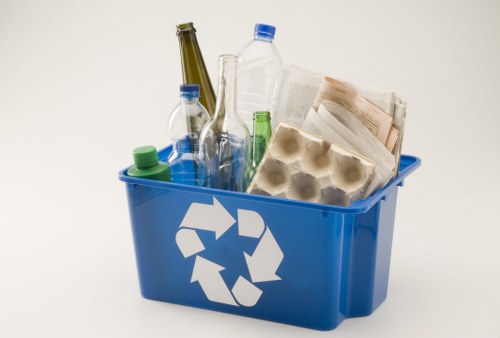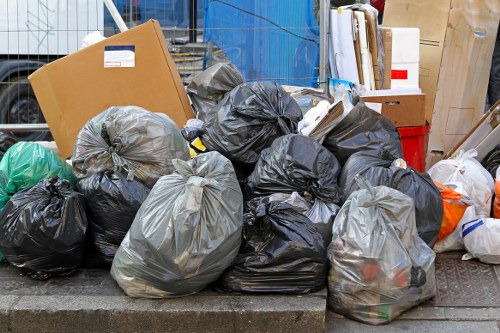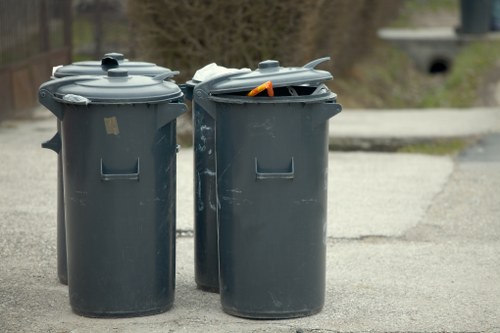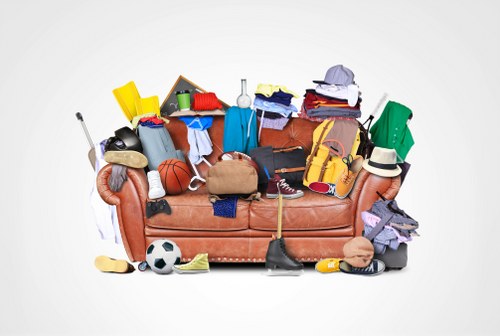Construction Waste Disposal in Millbank

In the bustling area of Millbank, construction activities are a common sight, contributing significantly to the local infrastructure and economy. However, with the rise in construction projects comes the inevitable challenge of managing and disposing of construction waste effectively. Proper waste disposal not only ensures a cleaner environment but also adheres to local regulations and promotes sustainable practices.
Construction waste encompasses a variety of materials generated during building, renovation, and demolition processes. These materials can range from concrete, wood, metals, plastics, to hazardous substances like asbestos and lead. Efficient disposal of such waste is crucial to prevent environmental degradation and health hazards.
Millbank, being a hub for numerous construction projects, has seen a surge in waste management needs. Local authorities and businesses must collaborate to implement strategies that address the unique challenges posed by construction waste in this area.
Understanding Construction Waste

Construction waste is typically categorized into two types: non-hazardous and hazardous. Non-hazardous waste includes materials like wood, metal, glass, and plastics, which can often be recycled or repurposed. Hazardous waste, on the other hand, comprises substances that pose significant risks to health and the environment, such as asbestos, lead-based paints, and chemicals.
The management of construction waste involves several steps, including collection, transportation, recycling, treatment, and final disposal. Each step requires careful planning and adherence to environmental regulations to minimize the impact on the surroundings.
Recycling is a pivotal component of construction waste management. By reusing materials, the demand for new resources decreases, leading to a reduction in environmental footprint. Additionally, recycling construction waste can lead to substantial cost savings for construction firms.
Types of Construction Waste

Identifying the types of construction waste is the first step towards effective disposal. Common types include:
- Concrete and Masonry: Often reused in new construction projects or recycled into aggregate for roads.
- Wood: Can be reclaimed for use in furniture or as biomass for energy production.
- Metals: Highly recyclable and can be melted down to produce new metal products.
- Plastics: Recycled into various products or repurposed for different construction applications.
- Hazardous Materials: Require specialized handling and disposal methods to ensure safety.
Proper segregation of these materials at the source can significantly enhance the efficiency of the disposal process.
Regulations Governing Construction Waste Disposal

Millbank, like many urban areas, is subject to stringent regulations regarding construction waste disposal. These regulations are designed to ensure that waste is managed in an environmentally responsible manner. Key aspects of these regulations include:
- Licensing Requirements: Companies involved in waste disposal must obtain the necessary licenses to operate legally.
- Waste Segregation: Mandates the separation of hazardous and non-hazardous waste at the construction site.
- Recycling Targets: Sets specific goals for the percentage of waste that must be recycled or reused.
- Reporting Obligations: Requires detailed documentation of waste management practices and disposal methods.
Adhering to these regulations helps in maintaining public health, protecting the environment, and avoiding legal penalties.
Best Practices for Construction Waste Disposal

Implementing best practices in construction waste disposal not only ensures compliance with regulations but also promotes sustainability. Some of these best practices include:
- Waste Audit: Conducting a thorough assessment of the types and quantities of waste generated during a project.
- Material Selection: Choosing materials that are recyclable or have a lower environmental impact.
- On-site Segregation: Separating different types of waste at the source to facilitate easier recycling and disposal.
- Partnering with Recyclers: Collaborating with local recycling facilities to ensure that waste is processed efficiently.
- Training and Education: Educating workers about proper waste management techniques and the importance of reducing waste.
Adopting these practices can lead to significant improvements in waste management, cost savings, and environmental benefits.
Local Facilities for Waste Disposal in Millbank

Millbank offers several facilities dedicated to the disposal and recycling of construction waste. These facilities are equipped to handle various types of waste, ensuring that materials are processed correctly and responsibly.
One such facility is the Millbank Recycling Center, which specializes in the collection and processing of non-hazardous construction waste. The center provides services such as drop-off points, on-site collection, and transportation of materials to recycling plants.
For hazardous materials, the Millbank Hazardous Waste Facility is the go-to location. This facility is equipped with the necessary tools and protocols to safely handle and dispose of dangerous substances, minimizing the risk to both the environment and public health.
Recycling Initiatives in Millbank

Recycling is a significant component of construction waste management in Millbank. The local government has initiated several programs to encourage the recycling of construction materials. These initiatives aim to reduce the volume of waste sent to landfills and promote the reuse of materials in new projects.
One notable program is the Construction and Demolition Recycling Initiative (CDRI), which provides incentives for construction firms to recycle their waste. Through CDRI, companies can receive discounts on waste disposal fees based on the amount of material they recycle.
Additionally, workshops and training sessions are regularly organized to educate construction workers and project managers about the benefits of recycling and the best practices to achieve it.
Innovative Recycling Technologies

Advancements in recycling technologies have enhanced the efficiency and effectiveness of construction waste management in Millbank. Innovative methods enable the processing of complex materials, ensuring that a higher percentage of waste is reclaimed and reused.
One such technology is the use of crushers and shredders, which break down concrete and masonry into smaller, reusable aggregates. These aggregates can then be used in new construction projects, reducing the need for virgin materials.
Another breakthrough is the development of advanced sorting systems that use automated processes to separate different types of waste more accurately. This technology ensures that recyclable materials are not contaminated, thereby improving the quality of the recycled products.
Sustainability and Environmental Impact

Effective construction waste disposal plays a critical role in promoting sustainability and reducing the environmental impact of construction activities in Millbank. By minimizing waste, conserving resources, and reducing pollution, sustainable waste management contributes to a healthier and more resilient community.
Recycling construction waste reduces the demand for new raw materials, thereby conserving natural resources and reducing the environmental degradation associated with extraction and processing. Additionally, proper waste disposal methods minimize the release of harmful pollutants into the air, water, and soil.
Moreover, sustainable practices in waste management can lead to energy savings, as recycling often requires less energy compared to producing new materials from scratch. This not only lowers operational costs but also contributes to the reduction of greenhouse gas emissions.
Challenges in Construction Waste Disposal

Despite the advancements and initiatives in place, managing construction waste in Millbank presents several challenges. Addressing these challenges is essential to improve the efficiency and effectiveness of waste disposal systems.
One of the primary challenges is the lack of awareness and understanding of proper waste management practices among construction workers and project managers. Without adequate knowledge, the segregation and recycling of waste become difficult, leading to increased landfill usage.
Another significant challenge is the logistical aspect of waste transportation and storage. Construction sites often generate large volumes of waste that need to be transported to appropriate facilities. Managing the transportation process efficiently requires reliable infrastructure and coordination between various stakeholders.
Economic Factors

The economic implications of construction waste disposal cannot be overlooked. The cost of waste management services, including collection, transportation, and disposal, can significantly impact the overall budget of construction projects.
Recycling and reusing materials, while environmentally beneficial, may sometimes entail higher upfront costs compared to traditional disposal methods. Additionally, fluctuating market prices for recycled materials can affect the viability of recycling initiatives.
However, investing in efficient waste management systems can lead to long-term cost savings by reducing the volume of waste that needs to be disposed of and minimizing environmental penalties for non-compliance with regulations.
Regulatory Compliance Costs

Compliance with construction waste disposal regulations involves various costs, including licensing fees, permits, and expenses related to implementing required practices. While these costs are necessary to ensure responsible waste management, they can pose financial burdens, especially for small construction firms.
To mitigate these costs, companies can explore government grants and subsidies aimed at promoting sustainable practices. Additionally, adopting efficient waste management strategies can help reduce overall expenses by minimizing waste generation and optimizing recycling processes.
Staying informed about regulatory changes and proactively adapting to new requirements can also prevent costly penalties and ensure smooth project operations.
Technological Limitations

While technological advancements have improved construction waste management, certain limitations still exist. The high cost of advanced recycling equipment and the need for skilled personnel to operate and maintain such technology can be barriers to widespread adoption.
Furthermore, some waste materials are difficult to recycle due to their composition or contamination levels. Developing new technologies that can efficiently process a broader range of materials is crucial to overcoming these limitations.
Collaboration between technology providers, construction firms, and local authorities can drive innovation and facilitate the implementation of effective waste management solutions.
Future Trends in Construction Waste Disposal

The landscape of construction waste disposal in Millbank is poised for significant transformation in the coming years. Several emerging trends are set to shape the future of waste management, making it more efficient, sustainable, and cost-effective.
One notable trend is the increased use of digital technologies, such as Building Information Modeling (BIM) and waste management software. These tools enable better planning, tracking, and optimization of waste generation and disposal processes.
Another trend is the adoption of circular economy principles, which emphasize the reuse and recycling of materials to create a closed-loop system. This approach reduces waste and promotes the continual use of resources, aligning with global sustainability goals.
Integration of Smart Technologies

Smart technologies are revolutionizing construction waste management by providing real-time data and automation capabilities. Sensors and IoT devices can monitor waste levels, track material flows, and optimize collection schedules, thereby enhancing the overall efficiency of waste disposal operations.
Artificial Intelligence (AI) and machine learning algorithms can analyze waste generation patterns and predict future trends, enabling proactive management strategies. These technologies also facilitate better decision-making by providing actionable insights into waste reduction and recycling opportunities.
Additionally, automated sorting systems powered by robotics and AI can improve the accuracy and speed of waste segregation, ensuring that recyclable materials are efficiently processed and diverted from landfills.
Policy and Legislative Developments

Future policy and legislative developments are expected to further enhance construction waste disposal practices in Millbank. Governments are likely to introduce more stringent regulations that mandate higher recycling rates and stricter waste management protocols.
Incentives for adopting green building practices and sustainable waste management solutions are also anticipated. These incentives can encourage construction firms to invest in eco-friendly technologies and processes, fostering a culture of sustainability within the industry.
Moreover, international agreements and environmental standards may influence local policies, aligning Millbank's waste management practices with global best practices and contributing to broader environmental conservation efforts.
Community Engagement and Awareness

Engaging the local community and raising awareness about construction waste disposal are essential for the successful implementation of waste management initiatives. Public participation can lead to better compliance with regulations and support for recycling programs.
Educational campaigns and outreach programs can inform residents and businesses about the importance of reducing construction waste, segregating materials, and utilizing recycling facilities. Community involvement can also drive demand for recycled materials, creating a robust local market for sustainable products.
Collaborative efforts between construction firms, local authorities, and community organizations can foster a shared responsibility towards maintaining a clean and sustainable environment in Millbank.
Conclusion

Construction waste disposal in Millbank is a multifaceted challenge that requires a combination of effective strategies, regulatory compliance, and community engagement. By understanding the types of waste, adhering to regulations, and implementing best practices, the construction industry can significantly reduce its environmental impact.
Advancements in recycling technologies and the adoption of sustainable practices are paving the way for a more efficient and eco-friendly approach to waste management. Despite the challenges, the future of construction waste disposal looks promising, with ongoing innovations and collaborative efforts driving progress.
For construction firms operating in Millbank, prioritizing waste management not only ensures compliance but also contributes to long-term sustainability and cost savings. Embracing these practices is essential for building a cleaner, healthier, and more sustainable community.
Contact us today to learn more about effective construction waste disposal solutions in Millbank and take a step towards a greener future.